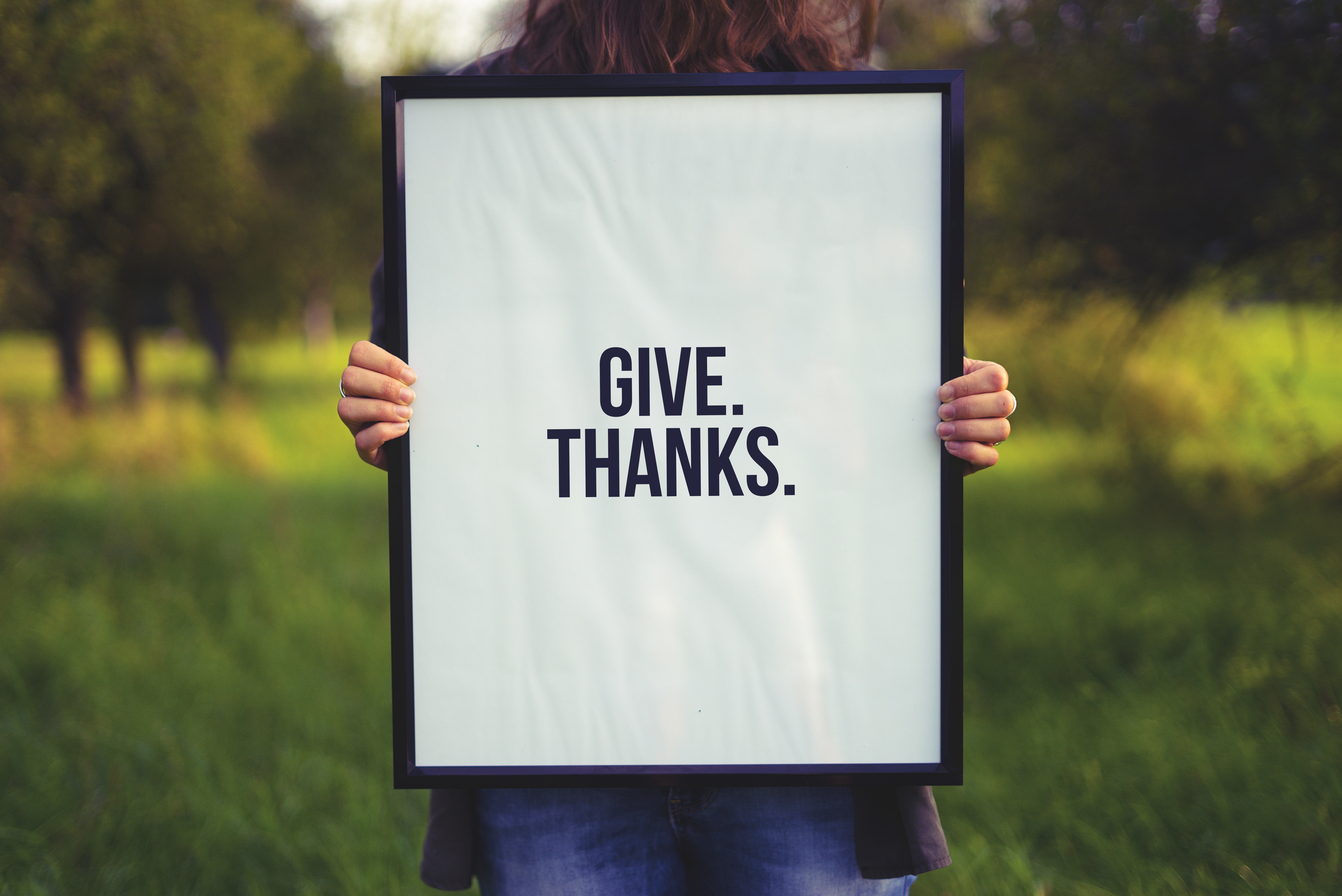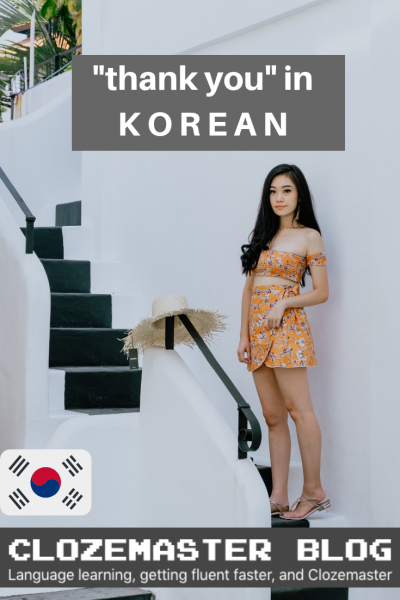
「ありがとう」はそのフレーズの1つですそれは話者と聴衆の両方を幸せにします。感謝の気持ちを表すために「ありがとう」と言うと、誰かの善行を認めたことを嬉しく思います。同様に、あなたの助けに感謝することで、感謝されている人を幸せにします。韓国語の「ありがとう」は同じ目的を果たし、英語と同様に、韓国語の「ありがとう」の言い方は複数あるので、調べてみましょう。
この記事では、韓国でありがとうと言うときは、3つのレベルの形式を探ります。次に、韓国語で「ありがとう」と言った人に対応するために使用できるいくつかの便利なフレーズを学習するのに役立ちます。
韓国語で「ありがとう」と言う2つの正式な方法
韓国語で「ありがとう」を言う標準的な方法は2つあります。
- 감사합니다(gam-sa-ham-ni-da)、
- 고맙습니다(go-map -seup-ni-da)。
どちらも同じ意味で、どちらも非常に一般的に使用されています。
いつ使用するか
これらの表現は、私たちがよく知らない人や、組織の上位や上位の人に感謝の気持ちを表すときに使用します。したがって、韓国語で「ありがとう」と言いたい場合は、見知らぬ人に、祖父母、または職場のCEOには、감사합니다または고맙습니다と言うことができます。
どちらも同じ意味で韓国で一般的に使用されていますが、감사합니다はより正式であるとよく言われます。 고맙습니다だから、正式な状況で「ありがとう」と言いたいときは、고맙습니다よりも감사합니다と言うのが少し一般的です。
さらに正式な「ありがとう」(ただし)めったに使用されません)
平均的な韓国語学習者がこれを言う可能性は低いですが、実際には韓国語で「ありがとう」を言うさらに正式な方法があります:
- 대단히 감사합니다(de-dan-hi gam-sa-ham-ni-da)。
意味
대단히は「非常に」、「非常に」、そして「非常に」、そしてこの言葉がありがとう감사합니다と組み合わされて대단히감사합니다になるとき、それは「ありがとう」または「私は本当にあなたに感謝している」を意味します。 대단히は一般的に감사합니다で使用されますが、고맙습니다で使用されることはめったにありません。
いつ使用するか
わかりました。この非常に正式なバージョンの韓国語で、どのような状況で人々はあなたに感謝を言うでしょうか?
今、あなたが不動産業者であり、オープンハウスを主催していると想像してみてください。あまり多くの人が現れませんでしたが、突然、最初の顧客がやって来ました。韓国語で「来てくれてありがとう」と言うと、「와주셔서대단히감사합니다」(wa-ju-syu-seo gam-sa-ham-ni-da)と言うことができます。 와주셔셔は「来てくれて」、「来てくれて」という意味なので、「来てくれてありがとう」という意味です。
韓国語で「ありがとう」の丁寧な言い方
韓国語で「ありがとう」と言う正式な言い方は2つありますが、丁寧な形の「ありがとう」にまとめることができるのはそのうちの1つだけです。
고맙습니다を…
- 고마워요(go-ma-wo-yo)。
いつ使用するか
これは丁寧な言い方です。韓国語で。ただし、「고마워요」の用途は限られています。フォーマルすぎて友達と一緒に使うことはできません。また、会ったばかりの人、あなたより年上の人、組織内であなたよりもランクが高い人と一緒に使うには、フォーマルで礼儀正しくありません。
では、いつ고마워요を使用できますか? 고마워요は、礼儀正しく、職場での敬意のレベルを維持することが重要であるため、よく知っている、または職場環境であなたと同じレベルの同僚とよく使用されます。何度か会ったことのある同年代の人と一緒に고마워요を使うこともできますし、礼儀正しくなりたいという理由であなたより若い人たちに고마워요を使うこともできます。
カジュアル韓国語で「ありがとう」
韓国語を話すときは、正式な言語と丁寧な言語をいつ使用するかを知ることが重要です。ただし、カジュアルな言葉をいつ使用するかを知ることも同様に重要です。韓国語の丁寧な感謝の形のように、私たちは고맙습니다を活用して韓国語の「ありがとう」のカジュアルな形を作ることができます。それは…
- 고마워(go-ma-wo)です。
いつ使用するか
고마워はカジュアルで非公式で、「ありがとう」を意味します。このカジュアルな韓国語の形式は、「반말」(バンマル)と呼ばれることがよくあります。
반말は、友人や兄弟など、身近な人だけが使用する言語の形式です。 반말は、一緒に使うべきではない人と一緒に使うと、非常に失礼に遭遇する可能性があります。 고마워は、あなたより若い人にも使用されますが、あなたが彼らに精通している場合、またはあなたより若い人が子供である場合に限ります。 고마워は、たとえ2人の間に大きな年齢差があっても、お互いに精通していない2人の大人の間で使用されることはありません。これは、すでに述べたように、非常に失礼なことに遭遇する可能性があり、韓国の人々と話すときは敬意を払うことが重要だからです。
Modifying「thank you」in Korean
Weve already learned to modifyありがとうございますwith大変、but大変is very formal、and its only used to modify the formal thank youありがとうございし – and quite frankly、an average Korean learner is unlikely to use this word
However、we can also modify the polite formありがとう、the casual formおかげで、and the formalありがとうございますandありがとうwith the words本当に(jung-mal)which means」really 。 So we can say:
- (Formal)本当にありがとうございます/ありがとう – really thank you、
- (Polite)本当にありがとうございまし – really thank you、
- (Casual)本当にありがとう – really thanks
Additionally、we can use modifiers「本当の」(jin-Jja)which also means “really”:
- (Formal)本当のありがとうございます/ありがとう – really thank you、
- (Polite)本物ありがとう – really thank you、
- (Casual)本物のおかげ – really thanks
And「とても」(neo-mu)、meaning「too」:
- (Formal)もございます/ありがとう – thank you so much、
- (Polite)もありがとう – thank you so much、
- (Casual)もありがとう – thank you so much。
Although the English」 too」is often used to express something negative、as in「too expensive」or「too hot」、this use of とても」in Korean is used to express that someone feels grateful very much。
Now、 so far weve learned the two forms of thank you in Koreanありがとうございますandありがとう、the three different levels of formality and how we can conjugateありがとう、and the modifiers we can use with」than k you」in Korean。 Lets now look at how we can respond to someone saying「thank you」
「Youre welcome」in Korean
If you type、「youre welcome」in a dictionary、you will learn that the Korean version of youre welcome」is …
- どういたしまして(chun-man-ae-yo)
どういたしましてis a VERY formal way of responding to someone saying thank you、and unless youre in an incredibly formal setting、youre unlikely to use this phrase – even Koreans rarely use this phrase。
A more common、yet still formal way of responding to someone saying「thank you」is …
- ベッチャを要する(byul-mal-sseum-eul-yo)
「ベッチャを要する「means」do not mention it 。 This phrase is formal and more commonly used thanどういたしまして。
Finally、the most commonly used response to “thank you」、which is less form、but a polite response、is …
- ない(a-ni-ae-yo)
「ない」means」not at all」、and of all the three phrases、this is the most commonly used expression when responding to」thank you in Korean」、mainly because it can be used in less formal settings。
So the three responses to thank you are:
- (Formal)どういたしまして – youre welcome、
- {Formal}ベッチャを要する – do not mention it、
- (Polite)ではない – not at all。
Great、before we end this article on ways to say」thank you」in Korean、heres a bonus expression。 When someone offers something、and we want to say」no」、in English its common to say」no thank you 。 So how do we say this in Korean?
No、thank you」in Korean
In Korean、there are two common ways to say」no thank you」and one of them weve learned already。
The first way to say」no thank you」is …
- ない(a-ni-ae-yo)
ない、which we can use in response to someone saying「thank you」、can also be used to say」no、thank you 。ないis the polite form、and we can conjugate it to a more formal form」はありません」(a-nim-ni-da)。
The second way of saying “no thank you」in Korean is …
- 大丈夫(gwen-chan-ah-yo)
大丈夫means」thats okay 。 This expression can also be conjugated to大丈夫です(gwen-chan-seum-ni-da)to become a more formal form。
The two forms of」no、thank you」are commonly used、and you can use the formal and less formal forms、depending on who youre speaking to
Wrap up!
So in Korean、there are four levels of formality when saying thank you in Korean
- Formal thank you:ありがとうございます、ありがとうございます。
- Polite thank you:ありがとう
- Casual thank you:ありがとう
its very important that you know which one to use with whom、as it can save you from a potential embarrassment for yourself、and from offending someone unintentionally。
We also learned a super formal way of saying「thank you」in Korean – ありがとうございます。
Then、we learned threeスルmodifiers we can use to emphasize how thankful we are。 And lastly、we learned three ways of saying “youre welcome」and two ways of saying」no、thank you」in Korean as well。
Remember、practice is everything when learning a language – so don 「t forget to practice Korean daily with the Clozemaster app!ありがとうございますfor reading this article!
Learn Korean in context with Clozemaster
Clozemaster has been designed to help you learn the language in context by filling in the gaps in authentic sentences 。 With features such as Grammar Challenges、Cloze-Listening、and Cloze-Reading、the app will let you emphasize all the competencies necessary to become fluent in Korean
Take your Korean to the next level。ここをクリックして、実際の韓国語の文章の練習を始めてください!
